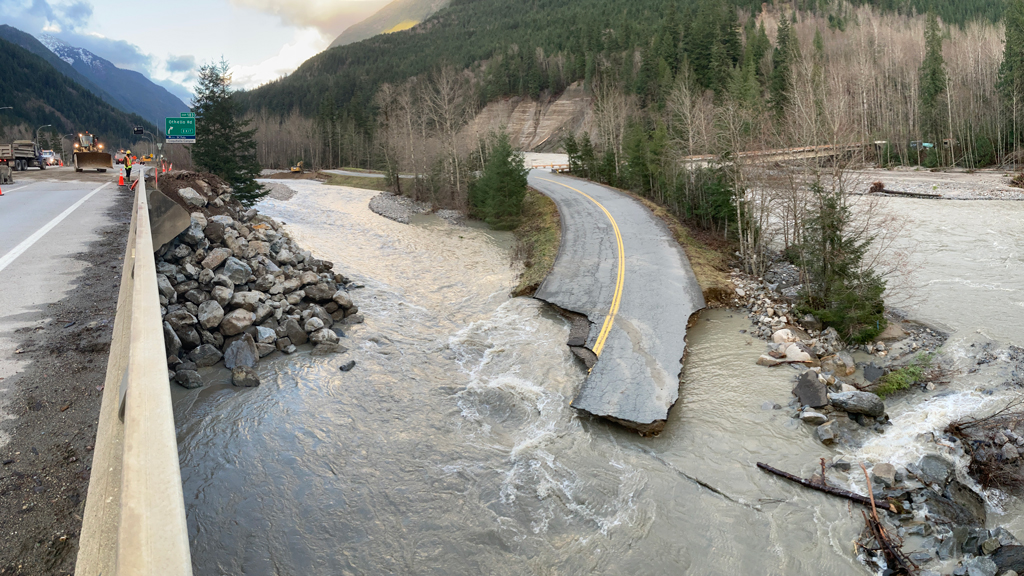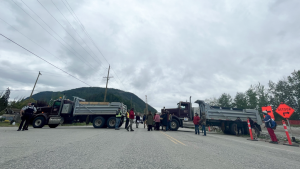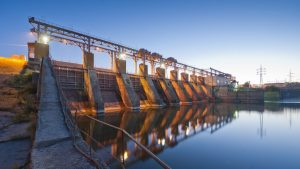The B.C. government’s Ministry of Transportation and Infrastructure is dealing with a current climate crisis while also planning ahead for the impact of future events on the province’s highways, roads and bridges.
Disastrous floods across British Columbia in November 2021 led to significant damage to roads, bridges, residences and businesses and cut off all land routes to Vancouver, one of Canada’s most important centres of trade.
B.C. Ministry of Transportation and Infrastructure chief engineer of highway services Ian Pilkington credited both government employees and the province’s construction industry with a rapid response to unprecedented damage.
“Being a mountainous province, we’ve had events of this nature but nothing of this magnitude and definitely nothing that took out all of our routes at the same time,” Pilkington said, adding contractors were able to address the large scale of work because of hiring flexibility in their contracts.
“All of our highway maintenance in the province is done through our maintenance contractors and part of their contract is doing emergency response. Part of their contract is designed so they can access and hire other pieces of equipment as needed depending on the size of the response,” he said.
“Right off the bat for Highway 3, Highway 5, Highway 1 and up on Highway 99, each of the maintenance contractors in that service area started putting the call out to whatever construction equipment and people were around and away they went.
“Everyone just jumped right in and started offering equipment. There’s a lot of construction going on in this province and so a lot of them dropped what they were doing and came to our aid.”
Pilkington said the provincial government recognized the danger climate change posed to infrastructure and studied possible solutions a decade ago.
“At that time Engineers Canada and Natural Resources Canada did up a protocol where you would take climate projections the international scientific community had already developed and you could apply it to a piece of infrastructure,” he said. “They designed it so it could be applied to a piece of highway, water system, a hospital, a school, whatever the case may be, to see how future climate would impact your infrastructure.”
Pilkington said the Ministry of Transportation and Infrastructure then analyzed the western segment of the Coquihalla Highway as well as other areas of the province and found the protocol did predict the likelihood of high-intensity rainfall and to adjust their approach to design accordingly.
“From that we created an internal policy that says for any design work on our highway infrastructure, either internal designers or external consultants, and whether it’s a brand-new design, rehabilitation or even emergency repair, you must take into account the effects of future climate change,” he said.
The ministry also worked with Engineers and Geoscientists BC to create a guideline for engineering groups called Developing Climate Change Resilient Designs and studied what changes should be adopted to make infrastructure more sustainable.
“The biggest change we found was the inputs, particularly when it comes to things like hydraulics. When we’re designing our bridges or sides of a culvert or drainage appliances, we always rely on 100 or 200-year flood levels, but those flows were always based on historical data,” he said.
“We now recognize we can’t rely on that historical data anymore and have to look at future data.”
While the floods and other climate events such as fire and mudslides had an impact, Pilkington said it hadn’t significantly accelerated plans already in place to replace aging infrastructure.
“We always have a rolling 10-year plan for all our infrastructure and we were always inspecting all our bridge structures, tunnels and things of that nature and we’ve got them on a rehabilitation program. We have a set amount of budget where every year we’re spending on average around $300 million on rehabilitation,” he said.
Climate change has changed the ministry’s calculus on replacing infrastructure that hasn’t aged out, he said.
“The next thing now is to look at if we’re going to proactively replace things early. Most things we replace because they’ve hit the end of their design life,” Pilkington said. “Things that haven’t hit their end of life from a materials point of view but needed to be upgraded due to climate change, that’s something we’re wrapping our heads around, recognizing we have all this aging infrastructure that needs to be replaced.”
For more comments and analysis from Pilkington, listen to The Construction Record podcast here.
Follow the author on Twitter @JOCFrey.











Recent Comments
comments for this post are closed